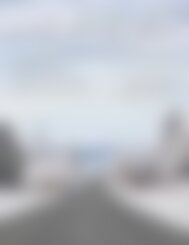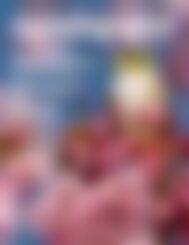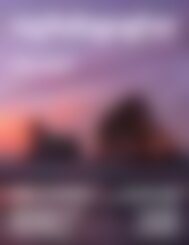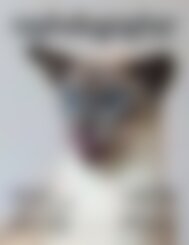NZPhotographer Issue 23, September 2019
As of December 2022, NZPhotographer magazine is only available when you purchase an annual or monthly subscription via the NZP website. Find out more: www.nzphotographer.nz
As of December 2022, NZPhotographer magazine is only available when you purchase an annual or monthly subscription via the NZP website. Find out more: www.nzphotographer.nz
Create successful ePaper yourself
Turn your PDF publications into a flip-book with our unique Google optimized e-Paper software.
ARTISTIC JUDGMENT<br />
What element of art is used to drive the message<br />
in the picture? There are basically 7 elements: line,<br />
shape, form, colour, space, texture and value. To stick<br />
to the objective of this article, I will not go too deep<br />
discussing these elements since art is so subjective but<br />
we can discuss a little.<br />
Each of the elements is unique in its own way and is<br />
used to drive different kinds of messages. The more<br />
of these elements you are able to incorporate, the<br />
better your photo will be. However, not every good<br />
picture has all of these elements in it, sometimes you<br />
just need one dominant element.<br />
LINES<br />
The use of lines (leading lines) is important when you<br />
take a picture with your subject in the far distance. An<br />
example of using lines is a trail or road leading towards<br />
your subject. You could take the picture from where you<br />
are standing tracing the line until its end point to help<br />
the viewer follow the line towards the main subject whilst<br />
helping them see everything around that same subject.<br />
SHAPES<br />
Shapes work well with a two-dimensional and/or<br />
enclosed area. If the picture you are taking is more shape<br />
oriented you might want to incorporate a number of<br />
shapes into the picture to portray the message well. Or<br />
you may even introduce shapes into the picture just to<br />
make your work more artistic. For example, in the picture<br />
on the previous page, the model was asked to pose<br />
in a certain way that expresses various shapes just to<br />
incorporate that element in the work.<br />
FORM<br />
This has to do with the shape of a particular object<br />
along its volume or perceived volume. It’s about<br />
creating an image from a perspective where you can<br />
give the viewer a sense of size. For instance, a picture<br />
of a building taken from the front allows people to<br />
see the rectangular shape but it can also be taken<br />
from a 45% side angle to give a 3D overview with the<br />
viewer able to see the front and side to get a sense of<br />
volume to show it isn’t just a flat building.<br />
COLOUR<br />
Another popular element is the use of striking colours<br />
to drive home your message. However, in instances<br />
where the scene is overflowing with many colours,<br />
such as at a carnival, you have to concentrate on<br />
a particular colour scheme to get the right result.<br />
For example, at a carnival, you can effectively use<br />
complementary colours from a scheme to single out<br />
your focus.<br />
SPACE<br />
This deals with how you are able to incorporate<br />
space so that the elements are not choked up. More<br />
often than not, a picture may not incorporate this<br />
element as it depends on the subject and the scene<br />
being shot. For instance, thinking of a carnival, space<br />
might not be that evident owing to the nature of<br />
the activities. However, the more you are able to<br />
incorporate space, the better your picture looks,<br />
especially when you need to single out a particular<br />
activity in the midst of all that is going on.<br />
TEXTURE<br />
This helps in creating a perception of how something<br />
feels or looks. For instance, a picture of a table with a<br />
rough surface and one with a smooth surface will give<br />
you different feelings. One might give the sense of<br />
luxury and the other of durability.<br />
VALUE<br />
This is the degree of lightness or darkness in a<br />
particular image. It deals with the relationship<br />
between highlights and shadows. Value helps to<br />
express a form or create an illusion of it in a picture.<br />
For example, if you take a photo of a white ball<br />
against a white background; if the picture is overly<br />
exposed, we may not be able to differentiate the ball<br />
and the background but if the photo is moderately<br />
exposed, there will be some level of shadow<br />
(darkness) in the picture which will help to differentiate<br />
between the ball and the background.<br />
NARRATIVE JUDGMENT<br />
After considering all the points above so that you are<br />
able to interpret your photo well yourself, you need to<br />
consider if the layman (the person viewing your work)<br />
will be able to recognise and see the same things.<br />
This determines how much post production work is<br />
necessary.<br />
Consider how much post production work the<br />
photo needs. Ask yourself if the exposure should<br />
be increased or reduced? Are there distractions to<br />
remove? Does it need to cropping?<br />
It is important to note that post production is usually<br />
one of the last things to consider and saying “I will<br />
fix things in Photoshop” is the statement of a poor<br />
photographer. Know that you are a photographer<br />
before you are an editor and post production is used<br />
to enhance a photo, not recreate it.<br />
CONCLUSION<br />
After you have considered all of these points<br />
individually you can put your picture out into the<br />
world for others to critique and give feedback on.<br />
Remember that no one can narrate your work as best<br />
as you can and you need to gain the confidence<br />
and ability to defend your work regardless of people’s<br />
opinion. Their feedback should only strive to make you<br />
a better photographer because at the end of it the<br />
day, everything is art.


















